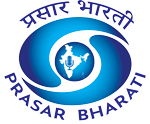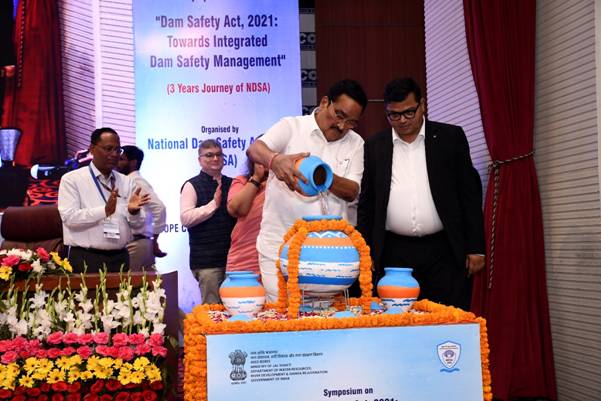Union Minister C R Patil on Monday inaugurated the symposium on “Dam Safety Act, 2021: Towards Integrated Dam Safety Management” organized by the National Dam Safety Authority (NDSA) under the Department of Water Resources, River Development & Ganga Rejuvenation (DoWR, RD & GR), Ministry of Jal Shakti. The event was held at the SCOPE Convention Centre in New Delhi in the presence of the Minister of State for Jal Shakti, Dr. Raj Bhushan Choudhary.
In his inaugural address, Union Minister Patil emphasized the significant strides made under the Dam Safety Act, 2021, stating that the Act has established a structured framework and institutional mechanism to ensure compliance and enhance dam safety across the country. He lauded NDSA’s proactive role in driving integrated dam safety management and encouraged stakeholders to approach dam safety not just as a regulatory requirement, but as a commitment to public safety, environmental sustainability, and national resilience.
Highlighting the aging infrastructure of dams, the minister stressed the importance of preventive measures, adoption of global best practices, and advanced technologies. He also underscored the need for every specified dam owner to allocate adequate funds for safety compliance, as mandated by the Act.
Minister of State Dr. Raj Bhushan Choudhary urged states to utilize risk-based prioritization tools and embrace innovations by startups and the private sector. He emphasized the relevance of the Dam Health and Rehabilitation Monitoring Application (DHARMA) portal as a central repository of data for all specified dams in the country.
During the symposium, several key releases were made to advance dam safety management. These included the National Register of Specified Dams – 2025, which provides a comprehensive database of all 6,628 specified dams across the country. Also released were the Guidelines for Preparing Operation and Maintenance Manuals for Ungated Dams, aimed at strengthening safety protocols, and a Compendium on Regulations under the Dam Safety Act, 2021. In addition, the National Strategy for Developing Dams as Sustainable and Responsible Tourism Destinations was introduced to explore environmentally friendly tourism opportunities around dam sites.
Debashree Mukherjee, Secretary, DoWR, RD & GR, highlighted India’s leadership role in dam safety while cautioning against complacency. She called for a holistic and integrated approach to dam safety that includes planning for ground-level implementation and addressing the growing challenges posed by climate change.
Anil Jain, Chairman of NDSA, reflected on the authority’s accomplishments over its three-year journey. He emphasized that dams are not only engineering marvels but also lifelines critical for irrigation, power generation, and flood control. Jain stressed that dam safety is a shared national responsibility requiring coordinated efforts.
R.K. Choudhary, CMD of NHPC, presented insights on dam safety compliance and risk mitigation strategies. He detailed NHPC’s best practices in structural health monitoring and adaptive management. He also shared that NHPC manages its dam safety data through its in-house portal, SAHAJ SEWA, which enables better monitoring and reporting.
Dr. Sanjay Belsare, Secretary of CAD & WM, Maharashtra, spoke about on-ground advancements in inspection protocols and capacity building in the state. He also acknowledged ongoing challenges, including limited funding and shortages of skilled manpower.
The technical sessions led by NDSA explored the evolution and key regulatory features of the Dam Safety Act, 2021, and the importance of a structured legal framework in maintaining long-term dam safety. The discussions also addressed the role of NDSA in implementing the Act, the challenges involved, and the necessity of capacity building among dam owners and state agencies—particularly in monitoring, inspections, and emergency planning.














